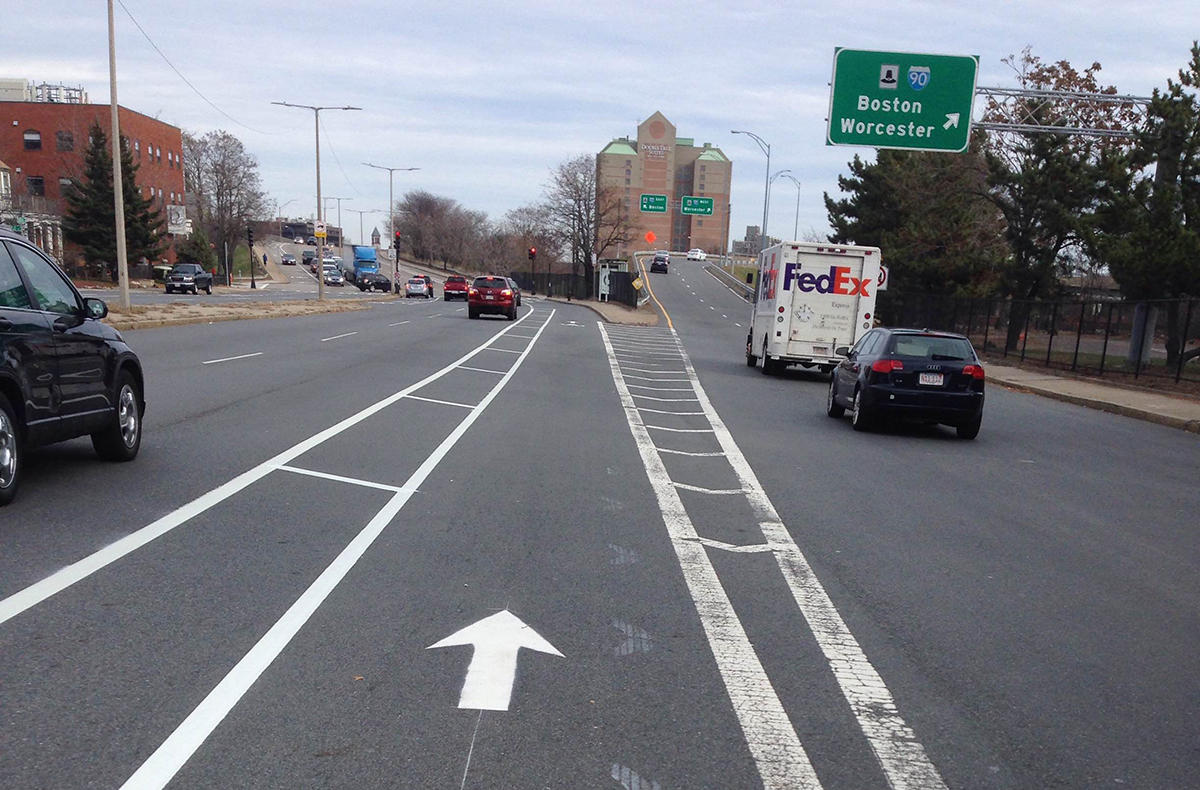City Hall Wants Your Help in Making Boston Streets Safer

Photo by Steve Annear
City Hall wants your help with identifying traffic spots throughout Boston that are potentially hazardous for bicyclists and pedestrians as part of its Vision Zero plan.
Residents and visitors are encouraged to identify problems areas on the Vision Zero website as part of a crowdsourcing exercise called The Safety Concerns map. The self-reporting is open to all, not just cyclists and pedestrians. Once on the site, users can locate the problem, explain it in detail, and note how they use the area in question.
“The Safety Concerns map is a great opportunity for people to share their ideas about how to improve roadway safety and create better and safer streets across our city,” said Mayor Marty Walsh in a statement.
The goal of Boston’s Vision Zero plan is to “eliminate fatal and serious traffic crashes in the city by 2030.”
Urban plans like Vision Zero aim to make city streets more hospitable for all users: bicyclists, pedestrians, and drivers. Many of the policy proposals that make up the Vision Zero plan, such as redesigning streets so they slow traffic and accommodate bicycles, are a radical shift away from the car-centric urban street designs that have plagued America for the last half-century. Boston’s Vision Zero plan operates under six principles:
1.Traffic deaths are preventable and unacceptable.
2. Human life takes priority over mobility and other objectives of the road system. The street system should be safe for all users, for all modes of transportation, in all communities, and for people of all ages and abilities.
3. Human error is inevitable and unpredictable; the transportation system should be designed to anticipate error so the consequence is not severe injury or death. Advancements in vehicle design and technology are necessary to avoid the safety impacts of human errors and poor behaviors.
4. People are inherently vulnerable and speed is a fundamental predictor of crash survival. The transportation system should be designed for speeds that protect human life.
5. Safe human behaviors, education, and enforcement are essential contributors to a safe system.
6. Policies at all levels of government need to align with making safety the highest priority for roadways.
The crowdsourcing effort is expected to help city planners identify areas of concern and engineer ways to address them. The Vision Zero plan was formally launched in December as part of Walsh’s broader 2030 effort to create citywide plans for Boston’s infrastructure and development. The Safety Concerns map is a completely separate entity from the city’s existing 311 hotline as well as the Citizens Connect app.

